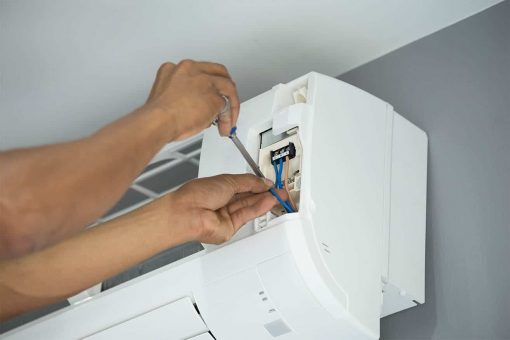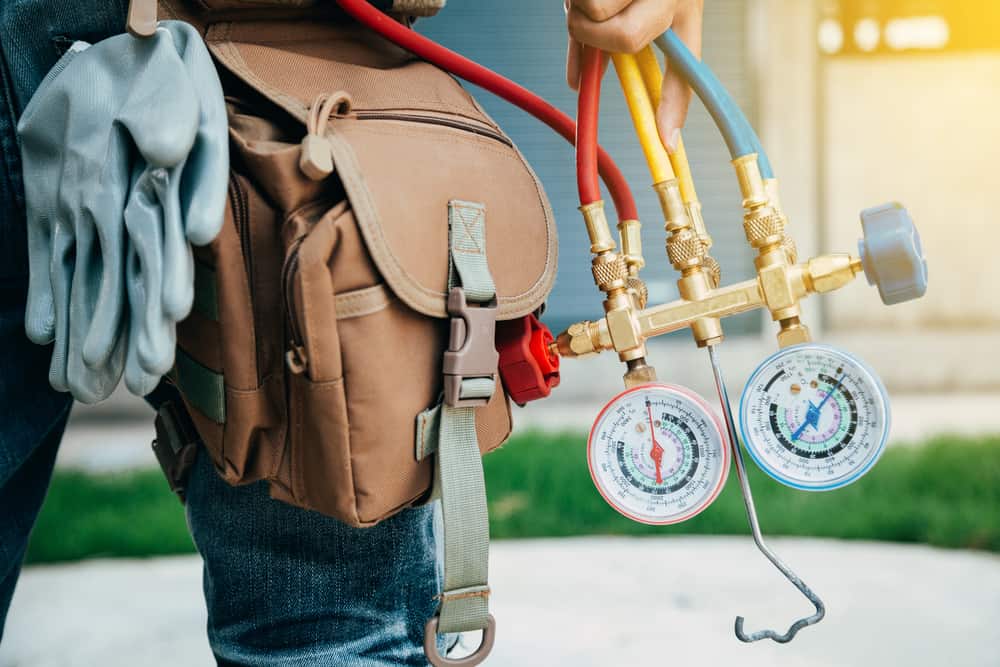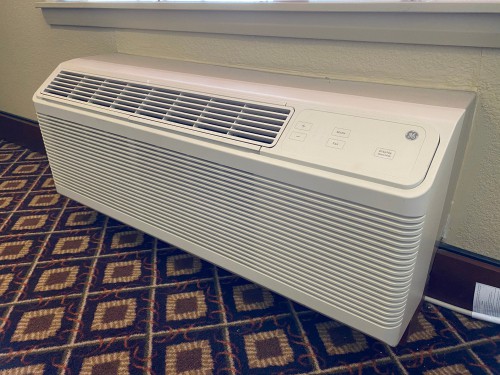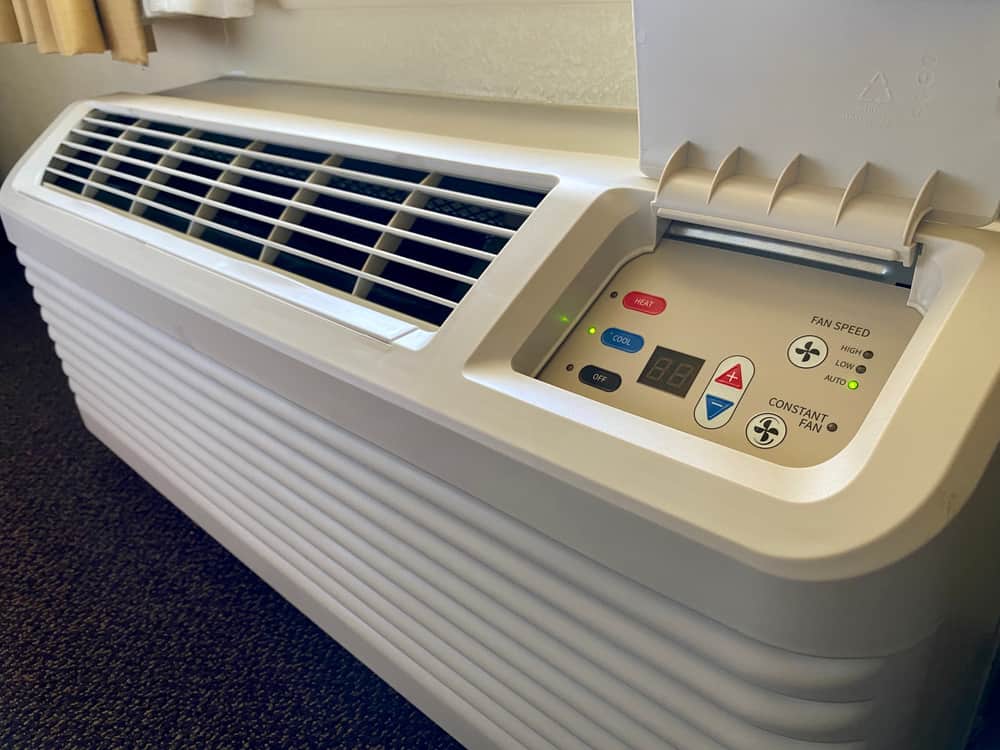Summary:
How PTAC Maintenance Prevents Costly Emergency Repairs
Emergency PTAC repair calls don’t happen on schedule. They happen during heat waves when your tenants are miserable, or in the middle of winter when a broken unit becomes a habitability issue. These crisis situations cost more than just the repair bill.
When you’re dealing with an emergency, you pay premium rates for after-hours service, rush parts delivery, and the urgency factor that every contractor builds into emergency pricing. Regular maintenance flips this equation by catching problems before they become crises.
What Our PTAC Technicians Find During Routine Service
Our trained technicians performing routine PTAC service look for the warning signs that most people miss. Refrigerant leaks start small but grow into expensive problems. Electrical connections loosen over time, creating fire hazards and system failures. Drainage issues begin as minor clogs but turn into water damage and mold problems.
During a typical maintenance visit, our technicians clean the coils that get clogged with NYC’s dust and debris, check the refrigerant levels that determine cooling efficiency, and inspect the electrical components that keep everything running safely. We also examine the drainage system that prevents water backup into your building.
These routine checks catch issues when they’re still small and inexpensive to fix. A $15 capacitor replacement during maintenance prevents a $300 emergency service call when that same capacitor fails during peak season. A cleaned coil that’s starting to show signs of corrosion gets treated before it needs complete replacement.
The difference between planned maintenance and emergency repair isn’t just timing. It’s the difference between controlling your costs and having your costs control you.
Why PTAC Problems Get Expensive Fast
PTAC units are designed to work as complete systems, which means when one component fails, it often damages others. A clogged drain that backs up can damage electrical components. A dirty coil that can’t dissipate heat properly forces the compressor to work harder, shortening its lifespan significantly.
In NYC’s challenging environment, PTAC units face constant stress from temperature extremes, humidity changes, and air quality issues. Units that aren’t maintained regularly develop problems that cascade through the entire system. What starts as a simple cleaning issue becomes a compressor replacement that costs thousands instead of hundreds.
Emergency repairs also come with hidden costs that planned maintenance avoids. When a PTAC unit fails, you’re dealing with unhappy tenants, potential vacancy issues if the problem isn’t fixed quickly, and the stress of managing a crisis situation. Emergency service calls often require multiple visits because technicians can’t always diagnose complex problems under pressure, and they may not have the right parts on the truck.
Regular maintenance visits happen when it’s convenient for everyone involved. Technicians can take the time to properly diagnose issues, order parts if needed, and schedule follow-up work during normal business hours at standard rates.
PTAC Maintenance Impact on Energy Costs and Equipment Life
PTAC units that aren’t maintained properly use significantly more energy to produce the same cooling and heating output. Dirty coils, low refrigerant levels, and clogged filters force the system to work harder, driving up your electricity bills month after month.
Well-maintained PTAC units also last longer, protecting the substantial investment you made in climate control equipment. Regular service addresses the wear and tear that naturally occurs, preventing premature replacement costs.
How Dirty PTAC Units Waste Energy
Energy efficiency in PTAC units depends on clean, unobstructed airflow and proper refrigerant levels. When coils get dirty, they can’t transfer heat effectively, forcing the compressor to run longer cycles to achieve the same temperature. A unit that used to cool a room in 10 minutes might take 20 minutes when the coils are clogged with dust and debris.
Clogged air filters create similar problems by restricting airflow through the system. The unit works harder to pull air through blocked filters, using more electricity while providing less comfort. In NYC’s dusty environment, filters need regular attention to maintain efficiency.
Low refrigerant levels, often caused by small leaks that develop over time, reduce cooling capacity while increasing energy consumption. A unit that’s low on refrigerant runs constantly but never reaches the set temperature, wasting electricity while failing to keep tenants comfortable.
These efficiency losses add up quickly on your utility bills. A building with multiple PTAC units that are running 15-20% less efficiently due to poor maintenance can see energy costs increase by hundreds of dollars per month. Over a year, that inefficiency costs more than a comprehensive maintenance program would have cost.
Extending PTAC Equipment Lifespan Through Regular Service
PTAC units represent a significant capital investment, especially when you’re equipping an entire building. Regular maintenance protects that investment by addressing the factors that cause premature equipment failure. Clean units run cooler, experience less stress, and maintain proper operating pressures that keep all components working within design specifications.
Neglected PTAC units develop problems that accelerate wear throughout the system. Dirty coils cause compressors to overheat and fail early. Clogged drains lead to water damage that affects electrical components. Poor airflow creates pressure imbalances that stress refrigerant lines and connections.
A well-maintained PTAC unit typically lasts 12-15 years, while neglected units often need replacement after 7-10 years. That difference represents thousands of dollars in avoided replacement costs per unit. For a building with 20 PTAC units, extending equipment life by even three years through proper maintenance saves tens of thousands in replacement costs.
Regular maintenance also keeps warranty coverage intact. Most PTAC manufacturers require documented maintenance to honor warranty claims. Without maintenance records, you’re responsible for repair costs that the manufacturer would otherwise cover.
The maintenance investment pays for itself through extended equipment life, lower energy costs, and fewer emergency repairs. It’s one of the most cost-effective ways to manage your building’s climate control systems.
Making PTAC Maintenance Work for Your Property
Regular PTAC maintenance transforms unpredictable equipment into reliable building systems that support your property’s profitability. The key is working with experienced technicians who understand both PTAC systems and the unique challenges of maintaining equipment in NYC’s demanding environment.
Professional maintenance scheduling ensures your units get attention before problems develop, protecting your investment while keeping tenants comfortable. When you’re ready to implement a maintenance program that actually delivers results, we bring the expertise and reliability that NYC property managers depend on.




